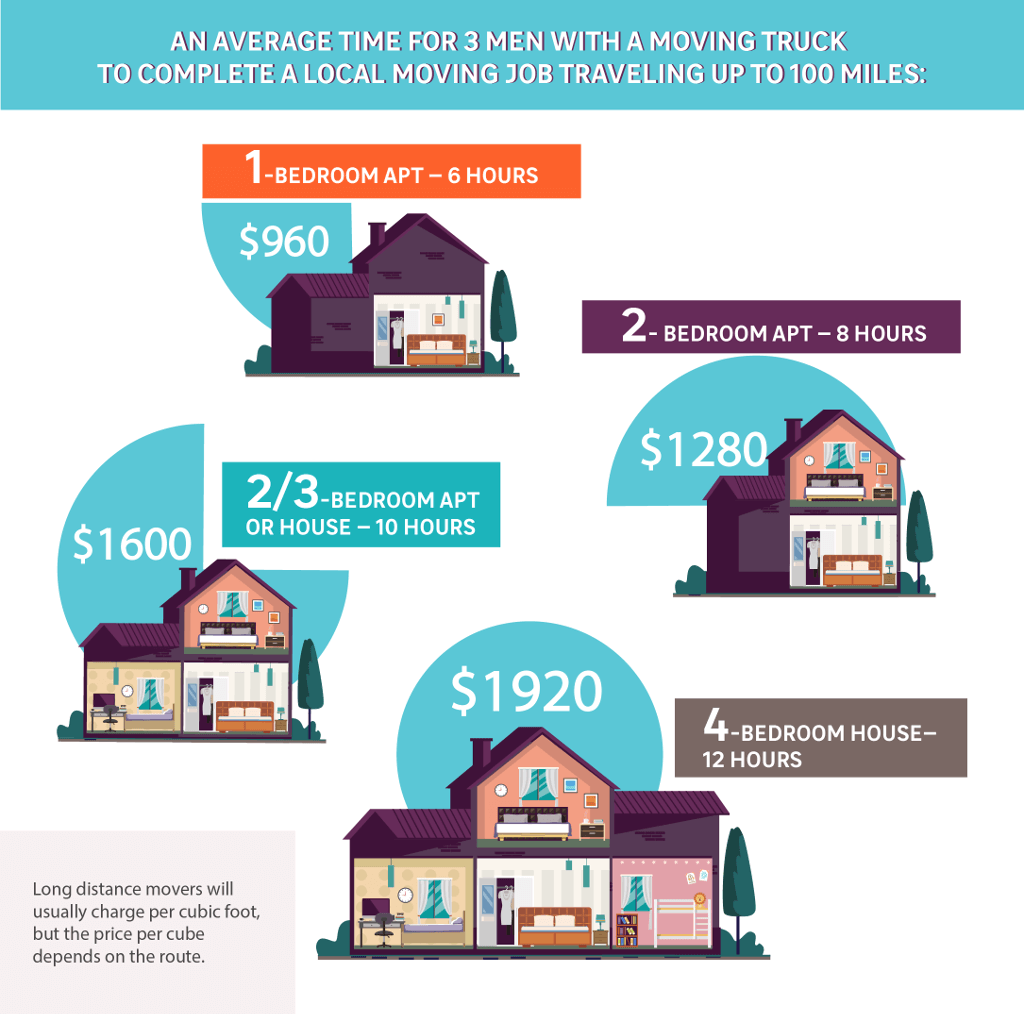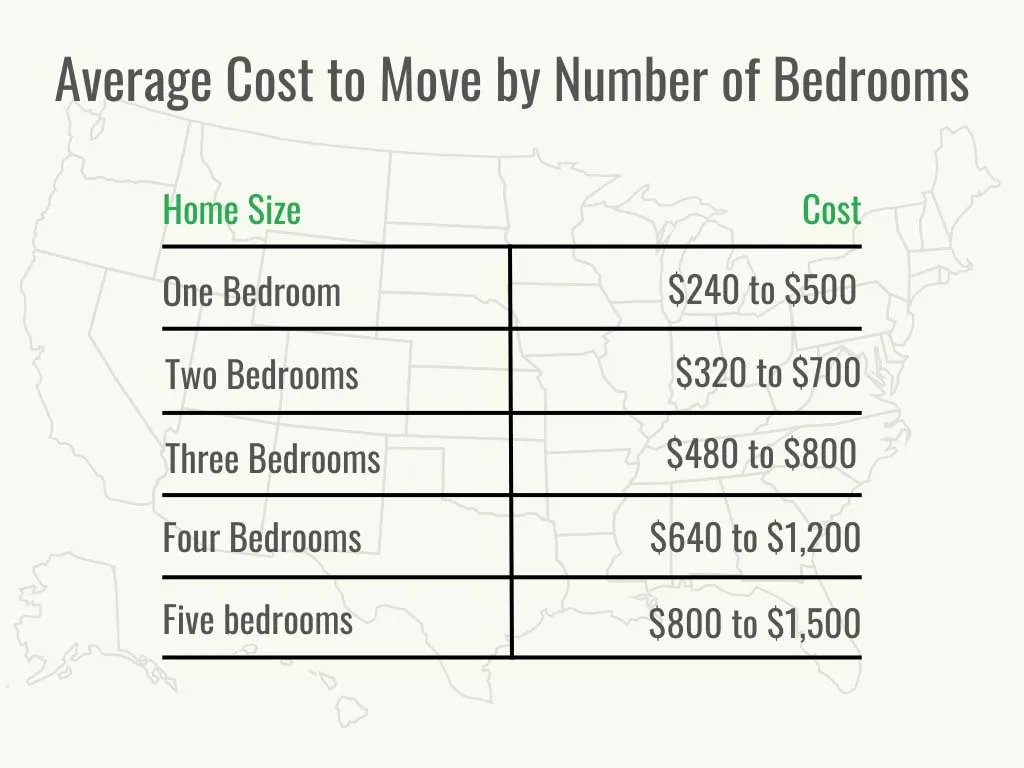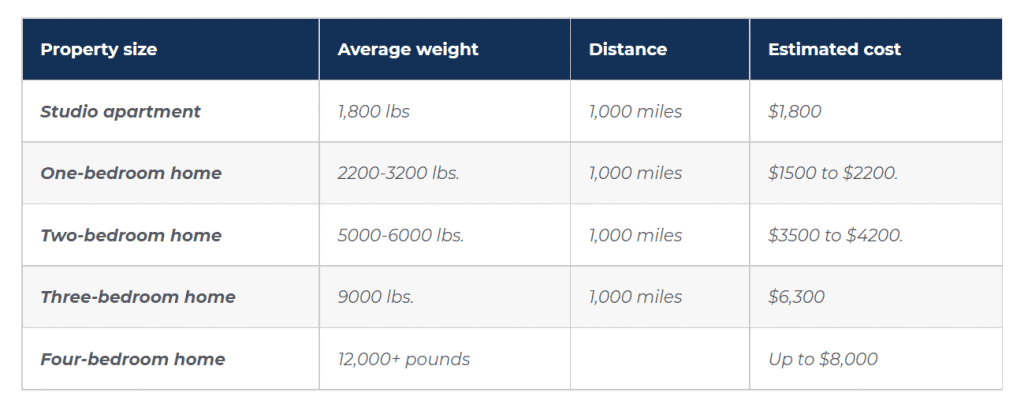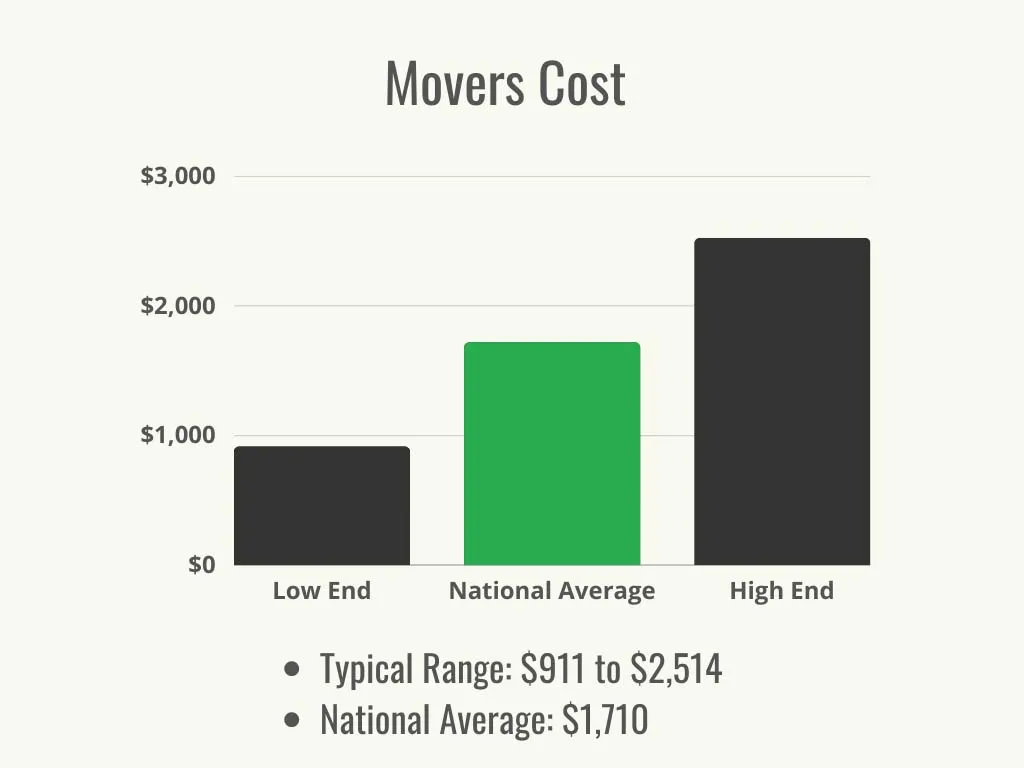
When you start thinking about moving into a new apartment, there’s more to it than just packing boxes and changing addresses. One of the most significant considerations in this process is the cost to move. Whether you’re moving down the street or across the country, the cost to move can quickly escalate, and it’s essential to understand what goes into determining those costs. It’s not just about how much you pay for the movers; there are many elements — like the size of your apartment, the distance of your move, and any additional services you might need — that factor into the total amount you’ll end up spending.
Apartment residents often overlook the hidden costs that come with moving, which can result in last-minute financial stress. In this guide, we’ll explore in detail everything that affects the cost to move so you can be better prepared for your relocation. From planning ahead to finding ways to minimize moving expenses, we’ll cover it all.
The Importance of Knowing the Cost to Move
Before you commit to hiring a moving company, it’s crucial to know exactly how much you’ll be paying. Many people underestimate the moving expenses associated with relocating, especially if they have never used professional movers before. The cost to move isn’t just a simple flat fee; it includes a variety of factors that contribute to the final bill. From packing materials and insurance to special handling for delicate items, there’s a lot that can affect your final moving fees.
By breaking down these costs and considering each aspect of the move, you can avoid financial surprises and make sure you’re setting aside enough in your moving budget. This article will take you through the steps to determine the cost to move your apartment, so you can prepare for the relocation process with confidence and clarity.

Factors That Influence the Cost to Move
The cost to move your belongings from one apartment to another depends on several factors. Understanding these can help you budget properly and avoid underestimating how much your move will cost.
Distance: Local vs. Long-Distance Moves
The distance between your old apartment and your new one is perhaps the most significant factor that influences the cost to move. The cost of relocation for local moves is typically lower than that for long-distance moves, simply because the latter requires more resources, time, and effort.
For a local move — where you’re moving within the same city or metropolitan area — the moving charges will generally be calculated based on an hourly rate, which could range from $80 to $150 per hour. The total moving expenses for a local move will vary depending on how long the move takes, how many movers you need, and the size of your apartment.
For long-distance or interstate moves, the cost to move is much more complex. Since it’s a longer journey, moving companies generally calculate the relocation costs based on the total weight of your belongings, the distance between the two locations, and any special circumstances (e.g., delays, difficult access to either apartment, or extra handling requirements). For long-distance moves, you may also encounter additional charges for fuel, tolls, or overnight accommodations for the movers. These additional costs can drive up the cost to move significantly.
Size of Your Apartment: Small vs. Large Apartments
The size of your apartment directly impacts the cost to move. Moving a small studio apartment is far less expensive than relocating a multi-bedroom apartment, simply because there is less to move. Movers will often base their moving fees on the number of rooms you’re relocating, or they might provide a per-weight pricing structure.
- Studio apartments typically contain fewer belongings, so the cost of moving will be lower, generally ranging from $300 to $500 for a local move. The total moving expenses can go up if you have a lot of heavy furniture or valuable items that need special care.
- One-bedroom apartments are still relatively small but often require more time and resources to move, especially if you have large furniture, like couches, tables, or appliances. The cost to move for one-bedroom apartments can range from $400 to $1,000 for a local move, and the costs for a long-distance move can increase significantly.
- Two-bedroom apartments or larger spaces have more furniture and personal items, meaning movers will need more time, more labor, and possibly a larger truck to accommodate everything. The cost to move a two-bedroom apartment can vary from $600 to $1,500 locally and can escalate for long-distance relocations.
- Three-bedroom apartments or larger homes require even more time and effort. Special equipment such as large trucks and additional manpower may be necessary, which will reflect in the relocation price. The cost to move a three-bedroom apartment can easily exceed $1,500 for local moves and can reach up to $5,000 for long-distance moves.

Time of Year: Peak Season vs. Off-Season
The time of year when you decide to move can have a significant impact on your moving budget. The moving industry experiences seasonal fluctuations in demand, with the peak season running from late spring through summer. During this time, the cost to move can increase due to high demand. Many moving companies charge premium rates during peak season, especially in popular cities where people tend to relocate more frequently.
If you want to save on the cost of relocation, consider moving during the off-season, which runs from fall to early spring. Moving companies often offer discounts or lower rates during this time, as business tends to slow down. You might be able to negotiate a better deal or take advantage of lower moving fees.
Additional Services: Packing, Unpacking, and More
Moving companies often offer extra services beyond just loading and unloading your items. These services can add significant costs to the overall cost to move. Some of these extra services include:
- Packing and unpacking: If you don’t have the time or energy to pack your items yourself, many movers will offer packing services for an additional fee. This can add up to several hundred dollars depending on the size of your apartment and how much needs to be packed. The cost to move can also increase if you require specialty packing materials for fragile or valuable items.
- Furniture disassembly and reassembly: Large furniture such as beds, bookshelves, or dining tables may need to be taken apart and reassembled. Movers may charge additional fees for this service, which can affect the relocation expenses.
- Storage: If there’s a gap between the time you move out and when you can move into your new apartment, you may need to store your belongings temporarily. The cost of renting a storage unit can range from $50 to $300 per month, depending on the size and duration of the rental. This can be a significant add-on to your moving budget.
- Specialty services: If you have specialty items, such as pianos, antiques, or large artworks, there may be extra costs involved in moving these items. These items require additional care, packaging, and handling, which increases the cost to move.
Insurance and Liability: Understanding Coverage Options
While it’s not always necessary, you may want to consider purchasing insurance for your move. The cost of moving can increase depending on the level of insurance you select. Movers often provide two types of insurance options:
- Basic coverage: This is typically included in the price of your move and provides limited protection for your items. It usually covers only a few cents per pound of lost or damaged goods, which might not be sufficient for high-value items.
- Full coverage: This type of insurance covers the full value of your items in case of damage or loss. It’s typically more expensive but can give you peace of mind knowing that your belongings are fully protected during the move.
Understanding what your movers offer in terms of insurance can have a significant impact on your moving expenses. If you opt for additional insurance, you’ll need to factor that into your cost to move calculations.

Average Cost to Move an Apartment
Understanding the average cost to move can help you budget better and set realistic expectations. While each move is unique, knowing the ballpark figures for different types of moves will give you a clearer idea of what to expect.
Local Moves: Average Costs Within the Same City
For local moves, the cost to move typically depends on the number of hours required to complete the move, the number of movers needed, and the size of the apartment. Local moves usually fall within the range of $300 to $1,500.
- Studio apartments: These are typically the cheapest moves, costing anywhere from $300 to $500, depending on the distance within the city and any extra services required.
- One-bedroom apartments: The cost of moving a one-bedroom apartment generally falls between $400 and $1,000 for a local move.
- Two-bedroom apartments: A two-bedroom apartment will usually cost between $600 and $1,500 for local moves.
- Three-bedroom apartments: Larger apartments may cost $1,500 or more for a local move, depending on the complexity of the move.
Long-Distance Moves: What to Expect
For long-distance moves, the cost to move is usually higher, as it includes transportation over a longer distance, additional labor costs, and possible overnight accommodations. The price range for long-distance moves typically starts at $2,000 and can go as high as $5,000 or more. Factors such as the size of the apartment, weight of the items, and travel distance all contribute to the cost of relocation.
- A one-bedroom apartment moving across the country might cost $2,000 to $3,000.
- A two-bedroom apartment might cost anywhere from $3,000 to $4,500 for a long-distance move.
- A three-bedroom apartment could easily exceed $4,000 and can rise up to $5,000 or more, depending on the specific requirements of the move.
Breakdown of Rates: Hourly vs. Flat Rates
Moving companies typically offer two types of pricing structures: hourly rates or flat rates.
- Hourly rates: Most local moves are charged by the hour, with prices ranging from $80 to $150 per hour. The number of movers and the time it takes to complete the move will determine the total moving expenses.
- Flat rates: For long-distance moves, companies often offer a flat rate based on the weight of your items and the distance of the move. This can help you avoid unexpected charges and make it easier to estimate the cost to move.

Additional Costs to Move You Might Encounter
Beyond the base cost to move, there are other potential expenses that you should be aware of when budgeting for your move.
Packing Materials: Boxes, Tape, and More
You’ll need to gather packing materials such as boxes, tape, bubble wrap, and packing peanuts. If you choose not to use the moving company’s packing services, you may need to buy these materials yourself. The cost of these materials can vary, but on average, you can expect to spend $100 to $200 on packing supplies.
Specialty Items: Large Furniture, Pianos, and Fragile Items
If you have specialty items like large furniture, pianos, or delicate art pieces, the cost to move can increase significantly. Specialty movers may charge extra for handling these items, and it may take additional time and equipment to ensure their safe transport.
Tips for Movers: How Much Should You Tip?
It’s customary to tip your movers for their hard work. While tipping is not mandatory, it’s a nice gesture and helps ensure a good relationship with the moving company. On average, people tip between $10 and $20 per mover, depending on the quality of service and the length of the job.
Storage Fees: Temporary Storage for Your Belongings
If your new apartment isn’t ready to receive your items or if there’s a gap between the time you move out and move in, you might need to use a storage unit. The cost of renting a storage unit can range from $50 to $300 per month depending on the size and location. This is an additional cost to factor into your moving budget.
Unforeseen Expenses for Moving: Delays and Other Factors
Moving doesn’t always go according to plan. Unexpected delays, bad weather, or difficult access to your apartment can cause extra costs. Always include a contingency fund of 10% to 15% of your total moving expenses to account for these unforeseen issues.
How to Get an Accurate Moving Estimate
To get a more accurate idea of your moving costs, it’s essential to request quotes from several moving companies. Here are some ways to get estimates:
In-Home Assessments
For the most accurate estimate, ask for an in-home assessment. During this process, a moving company representative will visit your apartment, assess the amount of stuff you have, and provide a detailed quote based on the specific needs of your move.
Online Estimates
If an in-home assessment isn’t feasible, many moving companies offer online estimate tools. By inputting the size of your apartment and the distance of the move, you can receive a rough estimate of the cost of relocation.
Flat Rate vs. Hourly Rate
When comparing quotes, consider whether the company offers a flat rate or an hourly rate, as this can make a big difference in the cost to move depending on your circumstances.

How to Save on the Cost to Move
DIY Options: Renting a Truck
If you want to keep the cost of moving down, you can opt for a DIY move. Renting a truck and enlisting the help of friends and family can significantly lower your moving fees, though you’ll need to provide all the labor and logistics yourself.
Off-Peak Moving: Lower Rates
Consider moving during the off-season. Moving in the winter or fall months when demand is lower can save you as much as 30% on your overall moving charges.
Decluttering: Reduce What You Move
One of the easiest ways to save money is to reduce the amount of stuff you need to move. Decluttering your apartment before the move will cut down on the moving expenses by decreasing the weight and number of items the movers have to handle.
Comparing Quotes
Always obtain quotes from at least three moving companies. This will allow you to compare prices, services, and customer reviews to find the best deal on your move.
Conclusion
In conclusion, the cost to move an apartment varies significantly depending on factors such as the distance, size of the apartment, and time of year. Understanding these factors and planning ahead can help you avoid unexpected financial surprises. Be sure to get accurate estimates, account for all potential costs, and look for ways to save by choosing the right time to move, downsizing your belongings, or even handling part of the move yourself. By taking these steps, you can ensure that your move is smooth and cost-effective, leaving you with one less thing to worry about during this busy transition.